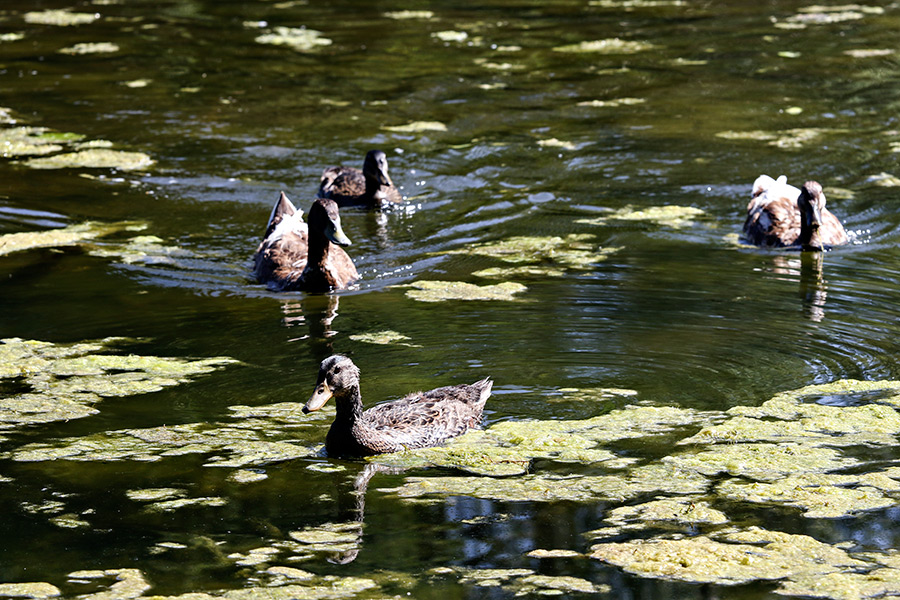Spread across 43 acres of land in the cradle of Kalispell as a gift to the city from the Charles Conrad family a century ago, Woodland Park is an iconic and cherished refuge.
City crews are trying to maintain the park’s status as one of the most popular and picturesque places by addressing a centerpiece of the site: the pond.
Over the years in summer, the stagnant, 3-foot-deep reservoir has turned a noticeable shade of green with clumps of gelatinous algae floating across the water’s surface.
The minimal circulation of water in and out of the pond has played a part in its declining condition, but most of the blame falls on the waterfowl. The park’s most familiar residents — a sizeable population of geese and ducks that live year-round at Woodland — are “contributing greatly” to the problem, according to Kalispell Parks and Recreation Director Chad Fincher.
The avian presence dates back to the 1890s, when Charles Conrad, considered the father of Kalispell, and his family established the section of land as their own central garden and playground in the heart of the new city. Located just across from the Conrad Mansion, the park was lush with grassy acreage, a wading pool, picnic areas and a stable of animals, including ducks, geese, peacocks and swans. The family later donated the land to the city for public use, and in 1936 Kalispell was awarded a grant through the federal Works Progress Administration to develop it into a formal park with a swimming pool as well as a drainage system for the pond.
Today the swimming pool is gone, but Kalispell’s oldest municipal park still resembles its original self in some ways. That includes the existence of waterfowl, which are now considered a mainstay despite the birds’ messy lifestyles.
“They are a draw to the park but the adverse effect of that is we end up with issues,” Fincher said.
Fincher said the city has taken recent water samples that did not reveal excessive nutrient loads or unsafe water hazards, but the quality of the pond is an issue.
The city is working with Montana Fish, Wildlife and Parks biologists to find solutions that would be cost effective, including possible natural and chemical applications.
In the meantime, the city purchased a new fountain that will be installed later this summer on the south end of the pond in an effort to better circulate the water and reduce algae blooms.
Some have said the city should completely dredge the pond to create a clean slate, but Fincher said the cost would be excessive and the problems could likely return.
Nevertheless, the city will try to do the best it can at preserving one of its historical sites.
“It is a priority with our department right now,” Fincher said. “We’re looking at what can we do on our budget to make improvements.”
